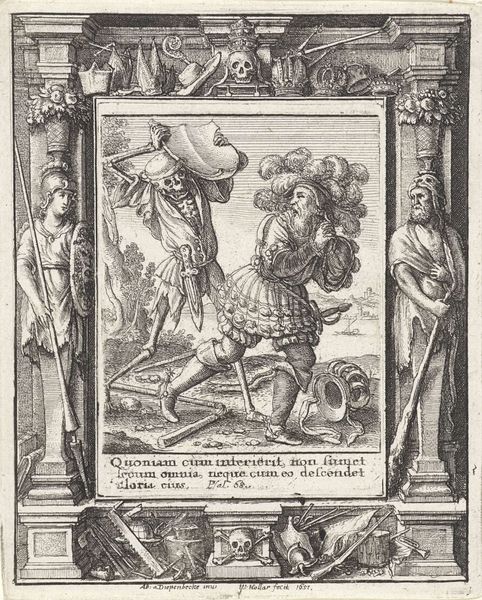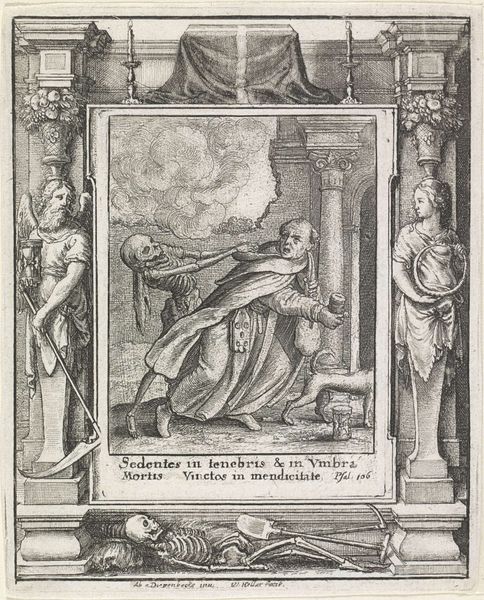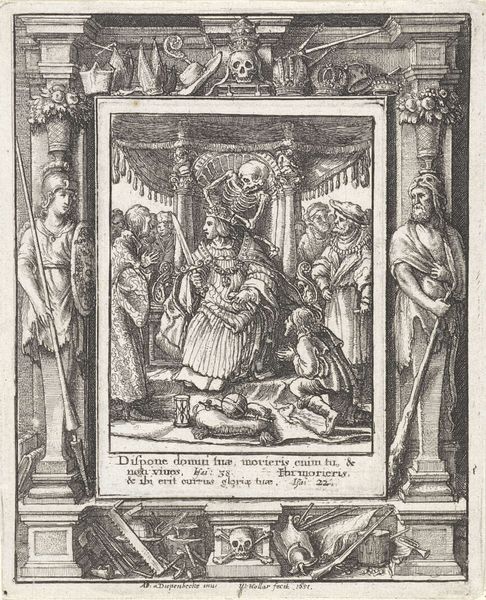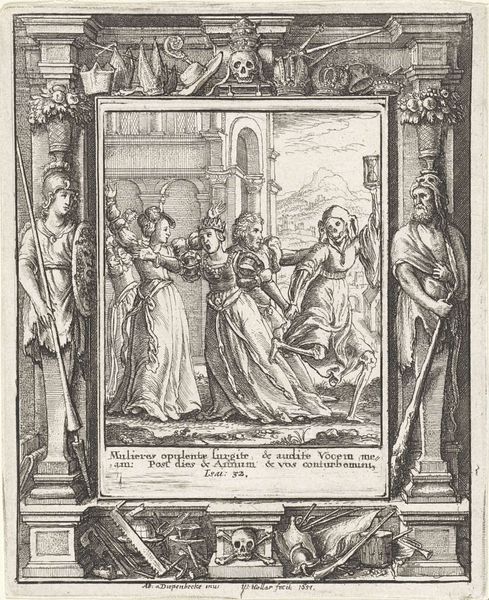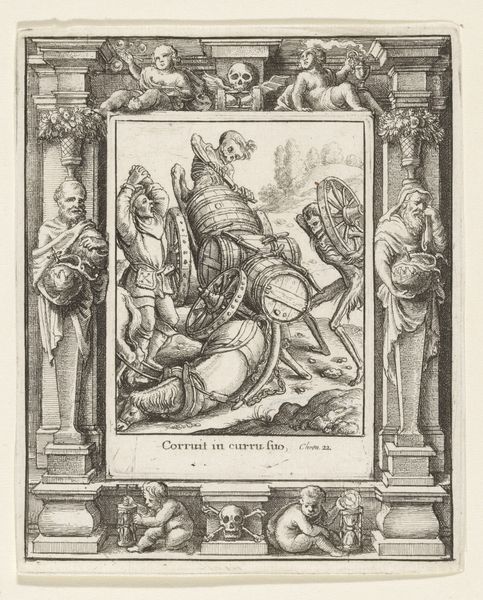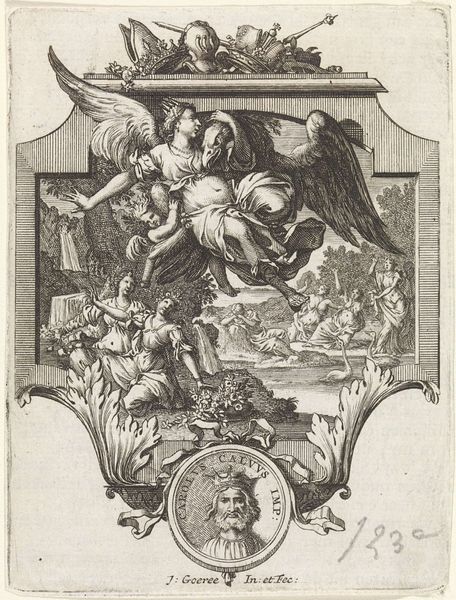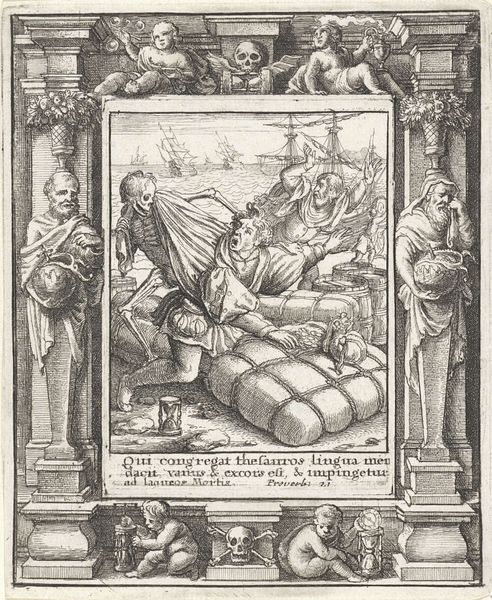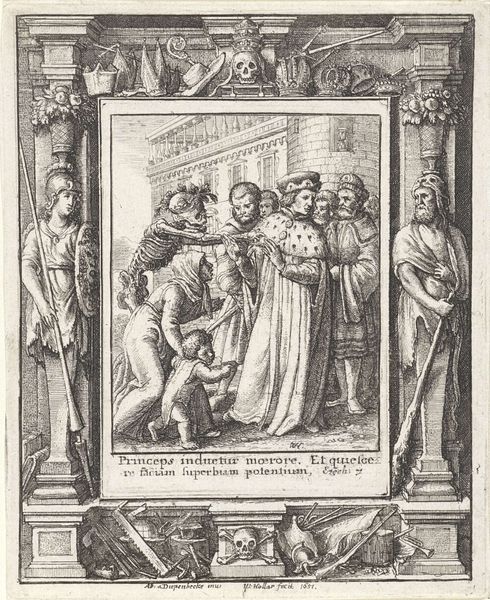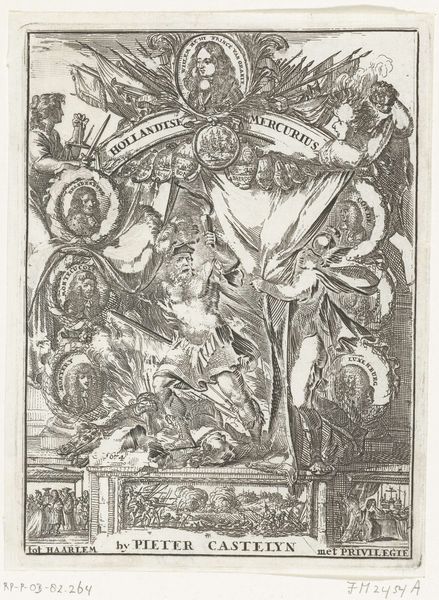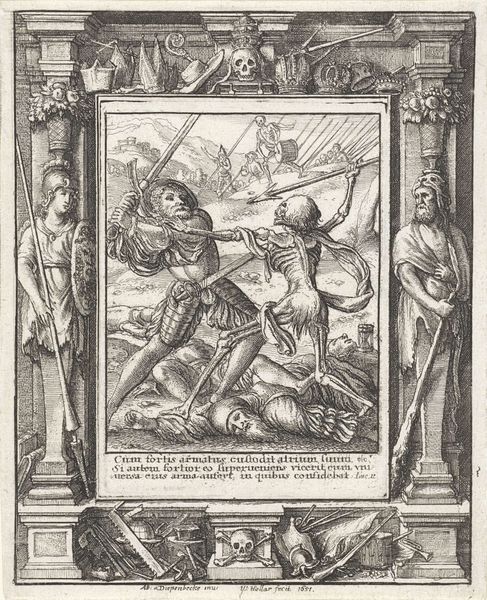
#
comic strip sketch
#
mechanical pen drawing
#
pen illustration
#
pen sketch
#
junji ito style
#
personal sketchbook
#
pen-ink sketch
#
pen work
#
sketchbook drawing
#
storyboard and sketchbook work
Dimensions: height 115 mm, width 95 mm, height 77 mm, width 55 mm
Copyright: Rijks Museum: Open Domain
Curator: Here we have "The Abbot and Death," a remarkably detailed engraving created by Wenceslaus Hollar in 1651, currently held in the Rijksmuseum collection. Editor: It’s incredibly stark. The tight lines create a real sense of urgency, and a bit of dark humor, if I dare say. The contrast is compelling, a little heavy, don’t you think? Curator: I find the interplay fascinating, especially when we look at the visual rhetoric at play. Notice the abbot confronting Death— he raises a book as if warding off evil, while attempting to clothe Death in his vestments. Editor: The diagonal lines create a really powerful sense of motion, leading our eyes from the broken hourglass at the base, all the way up to the skull above, crowning the scene. It’s very cleverly structured to give a clear focal point despite the detail. Curator: Precisely. The hourglass symbolizes time running out, a common memento mori motif that acted as a reminder of mortality. Then we see the figures on either side of the frame – the armed warrior on the left representing physical power, and the draped figure on the right maybe as worldly knowledge or poverty -- are ultimately rendered powerless before death. Even the ornamental setting suggests a hierarchy of life, and all will come to the same end. Editor: It's skillfully arranged—balancing the literal narrative within the frame with these broader symbolic flourishes. Didactic, but definitely with artistry. The engraver really utilizes that tension. Curator: These reminders were a comfort to some – they served to give medieval societies assurance that a familiar cultural story would continue. Life, then death, then...something else. Editor: Seeing how the scene is carefully composed, I'm struck by the timelessness of the composition. Its themes clearly outlive any single moment. Curator: Ultimately, Hollar’s commentary becomes an invitation to confront our shared mortality, framed through both sacred and secular contexts, creating a rich tapestry of understanding that transcends the constraints of its time. Editor: Indeed. Beyond just a technical exercise, this feels very calculated in its formal effect, something carefully planned to last beyond Hollar's own lifetime.
Comments
No comments
Be the first to comment and join the conversation on the ultimate creative platform.


